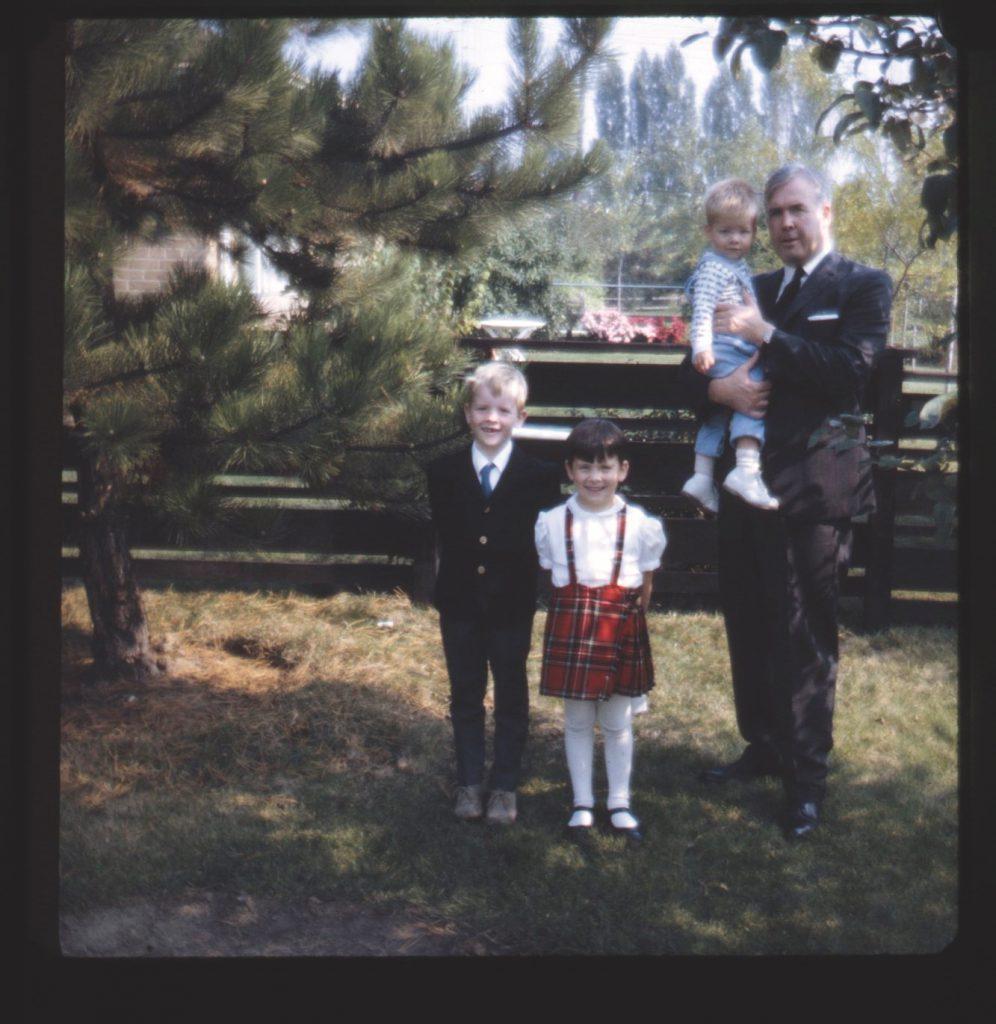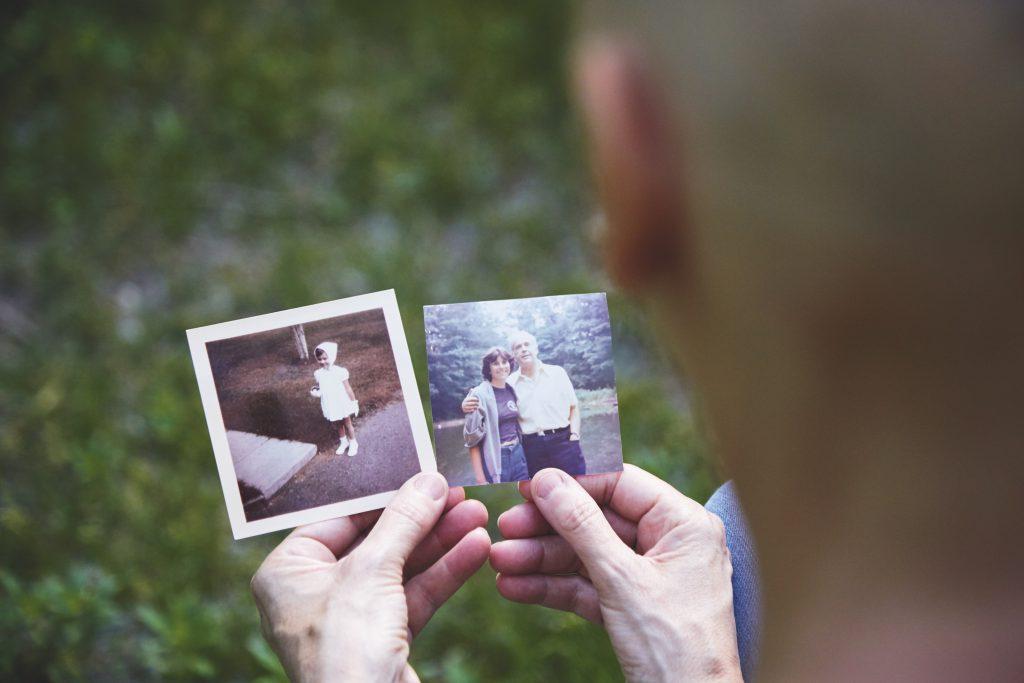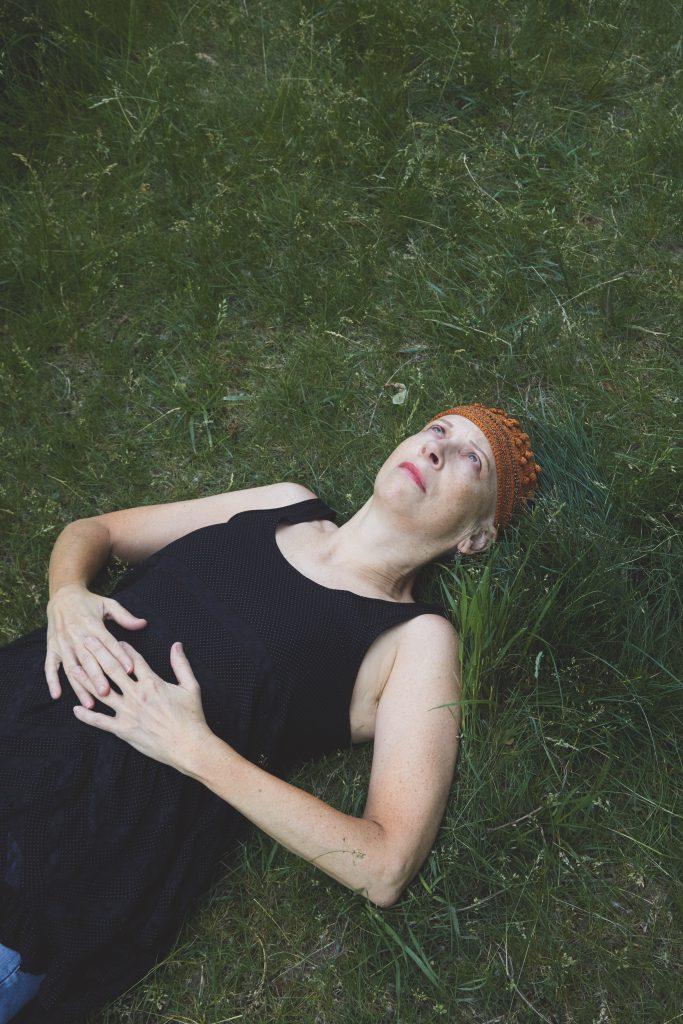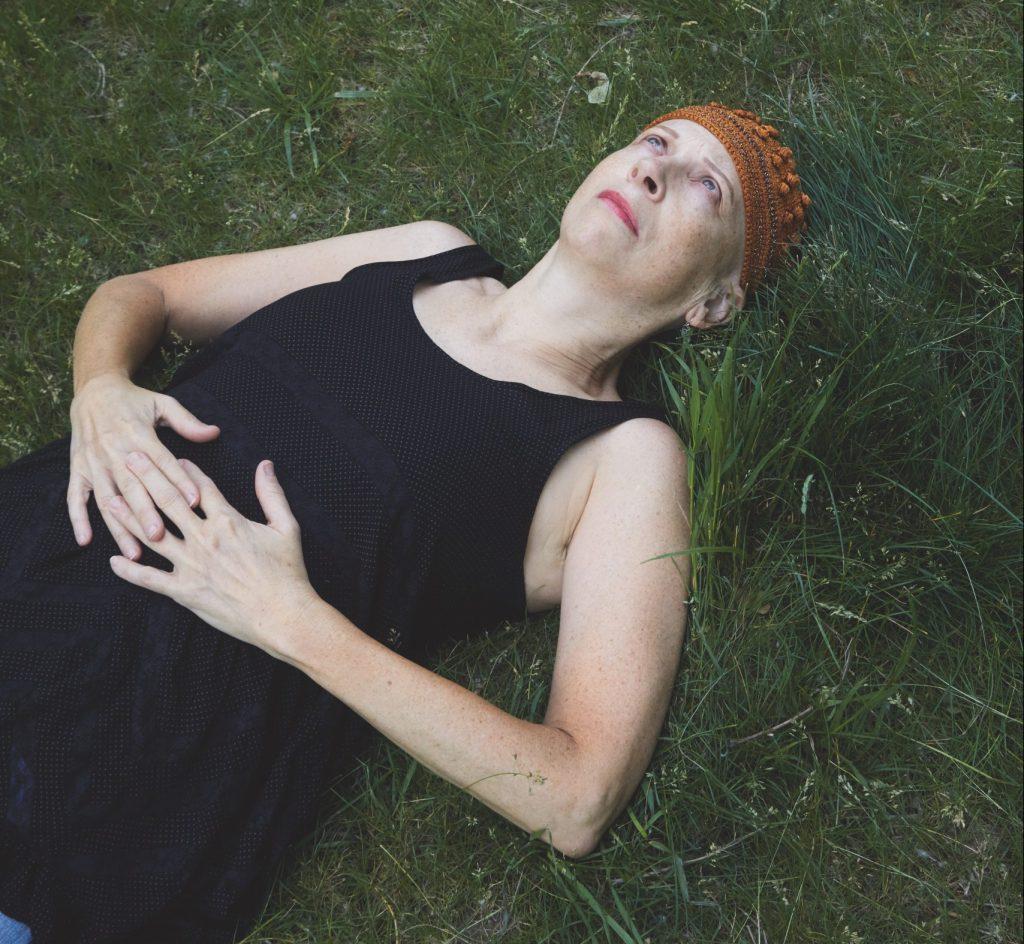I had a secret as a child: my body wasn’t real. I believed I was made in the image of God, and God was spirit. In my family’s religion, Christian Science, the universe was governed by a wholly good God, and I was a spiritual idea, always cared for in God’s infinite mind.
Christian Scientists believe the body is a temporary illusion, an extension of our thoughts. So my family’s first line of defence to illness wasn’t medicine or a doctor’s visit — it was prayer. When it was vaccination day at my Toronto elementary school in the 1970s, I anxiously handed a sealed envelope to my teacher. Inside was a form that said I was sitting out for religious reasons. While my peers lined up for shots, I stayed back in class. I just hoped a kid wouldn’t scowl at me, hands on hips, and demand: “Why don’t you believe in doctors?”
You are viewing: Why I Left Christian Science
Christian Science was part of my identity — something I was born into. Growing up, my religion put me at odds with mainstream values about how to care for the body. It wasn’t until I was a young adult studying political philosophy and opposing world views that I held my childhood assumptions up to the light.

Did I believe in human perfectibility? That was Christian Science’s promise — optimum health and ability could be achieved through an understanding of God. No, I recognized, that wasn’t true for me. But the pressure to choose between staying rooted to the old “me,” which now felt like a sham, or drifting erratically into a new, uncertain identity left me suicidal. A belief system is a shortcut to understanding how the world works and who matters. It often lies below conscious thought, yet it acts as an anchor. Cutting free can be terrifying.
Once the fastest growing religion in the United States, Christian Science had almost 270,000 American followers in 1936, the last time the church publicly issued statistics and possibly the peak of its popularity. Church closures since the 1970s suggest a sharp decline. As of this writing, there were 30 churches or societies (less formal groups) in Canada. One is the Toronto church I grew up in from the late 1960s to the ’80s.
Christian Science was an outgrowth of America’s New Thought movement, which was started by the clockmaker and mental healer Phineas P. Quimby in the 1800s. Quimby believed the mind can heal the body through suggestion and that disease was caused by a false belief created “not by God, but by man.” In 1862, Mary Baker Eddy sought treatment from Quimby, and she would go on to begin the Christian Science movement.
Eddy claimed that she had discovered the science behind the healings that Jesus performed. “Become conscious for a single moment that Life and intelligence are purely spiritual — neither in nor of matter — and the body will then utter no complaints,” Eddy wrote in Science and Health with Key to the Scriptures. Eddy credited her revelations to a miraculous recovery from a life-threatening fall on ice in 1866. (The attending doctor denied that he had ever declared her to be in critical condition.)
She founded the first Christian Science church in Boston in 1879. The Bible and Science and Health are the movement’s twin textbooks. Eddy said we’d lost the healing witnessed in early Christianity because we’d traded faith in God for faith in drugs. The crux of the problem was a belief in the body.
This rigid divide between the material and spiritual split me between two worlds. One was the physical world I was taught at school, and that everyone else seemed to believe in. I remember using crayons in Grade 1 to draw pictures of the five senses: a finger for touch, a tongue for taste, an eye for sight, an ear for hearing and a nose for smell. On Nov.18, 1971, I wrote in my notebook: “Today we learned you can transplant a heart. But first someone has to be dying.”

That entry made me squirm in my other world. At home and in Sunday school, my life didn’t depend on a pumping heart because I was spiritual. “Man is not matter; he is not made up of brain, blood, bones, and other material elements,” Eddy wrote.
At Sunday school, we cut out human figures from coloured construction paper and wrote Eddy’s synonyms for God on them: love, truth, life, soul, spirit, principle and mind. In our religion, I was “a perfect child of God,” reflecting these qualities in unlimited capacity.
God gave me my thoughts, I learned, if I listened. Spiritual thoughts about being sustained by a loving, omnipotent deity would result in health. Human thoughts about living in a fragile body would result in disease. “Stand porter at the door of thought,” Eddy wrote, “admitting only such conclusions as you wish realized in bodily results.”
Christian Science’s thought-body equation may seem antiquated, but the idea that positive thinking leads to good health lives on in New Age self-help — as does its inverse, that negative thoughts cause disease. For example, a whole industry was built around Louise Hay, who wrote the 1976 book Heal Your Body. Hay contended that any illness can be reversed by changing your thoughts. According to her website, she was healed of cervical cancer in part by using positive affirmations like “I am in perfect health.” Hay, who died in 2017, said cancer results from resentment. Not surprisingly, her mother was a Christian Scientist.
In Grade 2, I put my religion’s unique spin on the thought-body connection to the test. I rifled through my white chest of drawers with the gold trim and pulled out an orange top and miniskirt set. It had the words “Hug me, kiss me” stamped on it. I liked wearing it because it was made of a stretchy knit that didn’t restrict my belly, which was a bit plump from eating too many butter tarts.
That morning, I needed the stretch material for a different reason: I was hiding a lump. It was on my stomach, and it was red, hot and throbbing. I hadn’t shown the lump to my mother because I was trying to “know the truth” about it — that it wasn’t real. Pain came from a mistaken belief that I was material, I told myself.
A belief system is a shortcut to understanding how the world works and who matters. It often lies below conscious thought, yet it acts as an anchor. Cutting free can be terrifying.
At school, we played Red Rover. Our class was split in two. One group formed a human chain by holding hands. Its leader then called on members of the other group — the one I was in — to try to break their chain.
“Red Rover, Red Rover, we call Louise over.”
I ran fast and tried to barrel through the bodies, but my teacher, Mr. Hilliard, was standing in line. He was young and stocky, with a broad jaw and blockish face, a bit like Fred Flintstone with black glasses. He grabbed me around the waist and swung me — hard and high — up in the air.
Read more : Why California Sucks
The pressure of his hand burst the lump on my stomach. I yelped. My eyes watered. He put me down, and I ran to the back of the gymnasium, trying not to let anyone see me cry.
After school, I sat in our basement and watched cartoons. My stomach was oozing white pus. I dabbed at it with a tissue. Every time I thought I’d contained it, more leaked out. I was afraid to show my mother. I knew bad thoughts were at the root of illness. What was I thinking that was wrong? In my head, I repeated part of Eddy’s Scientific Statement of Being: “There is no life, truth, intelligence, nor substance in matter. All is infinite Mind and its infinite manifestation, for God is All-in-all.… Spirit is God, and man is His image and likeness. Therefore man is not material; he is spiritual.”
I closed my eyes and strained to listen. Would God order me to do something, like Moses had been commanded to free the Israelites? Other than George Jetson’s Brooklyn accent emanating from the TV, there was only silence.
At dinner, I showed my stomach to my mother, and she gave me a hug. “I’m sorry, that’s just error,” she said, using our shorthand for anything that fell outside God’s loving and immutable law. That night, a Christian Science nurse came to the house, washed my stomach with soap and water, and put a large bandage on it. I don’t recall what she said to me, but I’m sure she treated me with love and kindness as she tried to convey that I was spiritually perfect.
Christian Scientists shun medicine because they believe prayer is more effective, so a Christian Science “nurse” is an oxymoron. Their role is to provide non-medical care while focusing on a person’s “innate spirituality and responsiveness to God’s harmonious government,” according to the church’s website. These so-called nurses can work in concert with Christian Science practitioners — members of the church hired to pray for a person’s healing. Eddy said Christian Scientists could expect quick, complete healing through belief since “the physique is simply thought made manifest.” When a problem we prayed about persisted, it was never the religion that was at fault, but our thinking.
In 2019, Caroline Fraser, a former Christian Scientist who wrote God’s Perfect Child: Living and Dying in the Christian Science Church, detailed in the Guardian how this idea is taken to extremes. A Christian Science nurse assured her father, who had gangrene in one foot, that she had seen the condition healed. She suggested he wrap his foot in women’s sanitary pads. Months later, living in a Christian Science nursing home with no pain medicine — Eddy said if you “let go” of your belief in pain, the pain stopped — his foot fell off, and he died.
My father, who was a Second World War veteran, had a more practical approach. When I had hay fever and couldn’t sleep because my nose was stuffed up, he’d discreetly buy me some Dristan nasal spray. If something looked serious, he’d run my brothers and I up to the hospital. “Let’s be wise” were the code words he’d exchange with my mom.
By the time I reached the University of Western Ontario in the mid-1980s, where I studied political science, I thought I’d largely shed the Christian Science world view. Then I took a political psychology course and was confronted with its polar opposite. The class was for thinkers who wanted to critique western culture and discuss the purpose of life, and it was run by hippie professor Robert Melvin. We called him Bob.
The first book on Bob’s reading list was E.F. Schumacher’s 1973 work, Small Is Beautiful: Economics as if People Mattered, which critiques the 19th-century ideas that elevated economic profit to the highest value. “The market is the institutionalisation of individualism and non-responsibility,” Schumacher wrote. He defined the dominant educational paradigm of our time as “a view of the world as a wasteland in which there is no meaning or purpose.” Young people grow up to believe that “morality is bunk. Everything that appears to be ‘higher’ is really nothing but something quite mean and vulgar….Modern man is being told, in the name of science, that he is really nothing but a naked ape.”
This view clashed with my religious upbringing. “If we’re just animals, I don’t think there’s any purpose to life,” I told my friend Paul Nolan, as we headed home after class one day. “We just live and we die.”
I used to tease Paul about the muffins he made. He always had a super-healthy one packed with bran, barley and blueberries in his knapsack. He was following the Philosopher’s Diet, a regime by a philosophy professor who promised adherents would “lose weight and change the world.” Paul didn’t need to lose weight, but he did want to change the world.
Christian Scientists shun medicine because they believe prayer is more effective, so a Christian Science “nurse” is an oxymoron.
“What’s wrong with being an animal?” he asked.
“They’re not spiritual.”
“Well, I guess human beings are unique in that they long for meaning in their lives. I guess pigs and dogs and horses don’t seek meaning in the same way.”
“But what if there is no meaning for humans?” I continued.
“What if there is no overarching purpose to life, to why we’re here and why we suffer?”
“I think there is a purpose, but it’s not what religion or politics or the media tell us it is,” Paul said.“So what is it? Muffins?”“Yes, muffins are part of it. It’s pleasure and laughter and friendship and relationships. And Ronald Reagan.” I knew he threw in that last one to bug me.Just that day in class, another student — a granola type with long straight blond hair — had remarked that if we were seeking some big, lofty purpose in life, we were mistaken. “The purpose is right here in front of us,” she said. “It’s at my feet in the morning. It’s my cat.” I wanted to be sick. I needed a purpose that was bigger than a cat.

I got depressed that year. In a break with my religion, I made an appointment with the campus psychiatrist, Dr. Stanley Dobrowolski. He told me to call him Stan. (In 2014, Dobrowolski pleaded guilty to multiple counts of sexual assault against female patients. I was not one of them, though he verbally abused me and destroyed my sense of self. He was sentenced to four years in prison and lost his medical licence.)“We’re doing an analysis of capitalism,” I told him during one of my appointments, “about how it’s based on greed and exploitation, and how wealth never trickles down to the people on the bottom.”“Hmm,” said Stan, unconvinced. He was wearing business slacks and had a gold pen clipped to his shirt pocket. “Don’t throw the baby out with the bathwater,” he said, shaking his head and chuckling.Stan wasn’t interested in talking about capitalism or my meaning-of-life angst.He said self-worth was earned through action. The problem was that I didn’t feel up to earning it. I didn’t know what I wanted to do career-wise, I was disillusioned with politics, I was depressed and I couldn’t sleep.I wasn’t used to sitting with ambiguity. According to Christian Science, I didn’t have a single quality that wasn’t derived from God. As a child, I was taught that if something was a “right idea” it would happen effortlessly because I was mirroring God. Waiting on “right ideas” made it hard to trust my own instincts.When I told Stan I’d decided to leave school at Christmas, he blew up at me. “I don’t mean to be paternalistic, but I’ve treated a whole group of women, and basically their only problem is that they’re emotional wimps,” he said. “They let other people control them. They don’t choose what they want in life. In 30 years, do you want your grandchildren to know you’re a quitter?”A quitter? I knew that was a simplistic label. Grandchildren? I couldn’t imagine making it to Christmas, much less lasting three decades. “I guess not,” I said finally. “I don’t know what’s wrong with me. Everything seems futile.” A hot tear rolled down my cheek. “When I had struggles before, I could tell myself that I was a perfect child of God, and believe it. But I can’t believe that anymore.”“Did I tell you I once considered becoming a priest?” Stan asked. “I was an altar boy. I thought about going into the priesthood, but I would have been doing it to make my family happy. It would have been a cop-out: a way to escape thinking through my goals in life and taking risks in relationships. Our ability to think gives us control over life.”I thought I was getting an objective medical treatment, not realizing that psychiatry, like religion, is based on a world view. Stan always had a copy of a book spread open, spine up, on his desk: The Psychology of Self-Esteem by Nathaniel Branden. Years later, I discovered that the author based his approach on the Objectivist philosophy of Ayn Rand, with whom he had a romantic relationship. Branden glorified self-interest and intellectual achievement, and defined spiritual belief and altruism as indicators of false or “pseudo” self-esteem.I finally stopped going to see Stan, but I was suicidal. I called my old Christian Science practitioner. She was an exuberantly loving and unflappable older woman. She assured me that “error” was just a mistaken thought and that if I’d gotten off track, I just needed to get back on. “The divine consciousness is uncontaminated, and a false belief can never enter it,” she said.
When I had struggles before, I could tell myself that I was a perfect child of God, and believe it. But I can’t believe that anymore.
Read more : Why Are Gyms So Expensive
More recent brain research suggests that we don’t have precise control of our thinking. Eddy’s claim that you could deny entry — like closing a door — to certain thoughts was decidedly unscientific. In fact, studies show that the more you try to suppress a thought, the stronger it becomes. This was made clear in The Imp of the Mind, a groundbreaking 2002 book by the late Lee Baer, an expert in obsessive-compulsive disorder at Harvard Medical SchoolI went to the local Christian Science reading room and painstakingly wrote down dozens of Eddy’s references about “God and man.” “Two hours a day,” I wrote at the top of the list, committing to daily study to force myself into a spiritual mould. It didn’t work. I took an overdose and ended up on a ventilator.That summer, I lived with my former Sunday school teacher Margot Miller and her family. Margot was one of the kindest people I’d ever met, and she never pushed the religion on me. She found me a feminist social worker, and I began to put my life back together.
In 1994, the birth of my son Ben with a rare genetic disorder made the logic of Christian Science grotesque. I wasn’t about to deny a part of his identity, or to see his disabilities as an error I had caused in my thinking and could heal through prayer. But in taking a medical approach to my son’s care, I was introduced to a new view of the body. Science sorted it into one of two worlds: “normal” or “abnormal.”“You have every chance of having a perfect baby — next time,” a specialist told me cheerily when my son was diagnosed. That’s because the genetic change wasn’t something that my husband or I carried, but a genetic fluke that happened at conception.A “perfect baby.” It sounded like “a perfect child of God.” But instead of defining perfection as spiritual purity, this ideal was genetic normality.

The concept of a “normal” body is relatively recent, notes Sara Hendren in her 2020 book, What Can a Body Do? Prior to the introduction of statistics in the 19th century, all bodies were considered less than ideal because people compared themselves to gods or saints. “When the average is laden with cultural worth, everything changes,” she writes. “What was common began to be seen as what was ‘natural,’ and what was ‘natural’ came to be seen as right.… With the introduction of the bell curve came the notion of ‘abnormal’ bodies.”
“What is wrong with his head?” a surgeon demanded angrily one day after prancing into a clinic room where my baby lay on an examining table, charming some medical students. I explained that he was born with a head circumference in the 50th percentile, but height below the third, making him look like a little Buddha.
Hospital visits like this could send me reeling with rage and grief for days. I didn’t know anything about disability rights then, and I didn’t know how to go against the cultural grain of normalcy. It was almost like I was back in grade school, being taunted with “Why don’t you believe in doctors?”
When I was immersed in loving and caring for my son, I didn’t see him the way some doctors did: he was a cuddly ball of giggles, interests and charms, with bright, piercing eyes that could drill a hole of tenderness in your heart.
The medical view of disability as defect had exceptions. When our pediatrician first met our son, he held him up like a precious vase. When I took Ben to a nursery school at Toronto’s Holland Bloorview Kids Rehabilitation Hospital, the staff delighted in him as a child full of value. I later took a job at the hospital, which focuses on creating a “world of possibility” through therapy, the arts, research and technology. It ascribes to the social model of disability and looks at how stigma and an inaccessibly built environment shut disabled people out of everyday life.
For a long time, the random nature of my son’s disorder shook me. As a child, I was taught to avoid the words “accident” or “luck,” because they suggested God wasn’t in control.
In our world, “Divine Love always has met, and always will meet, every human need,” Eddy wrote. Things didn’t strike out of the blue. There was a reason, a certainty — even a justice — about the way the world worked. My son’s genetic condition put the lie to that rhetoric. And then I had to question why I was born with so many advantages. Why didn’t my body need repeated surgeries? Why did speech come effortlessly to me? It wasn’t because I “earned” it or did anything special.
Nassim Taleb’s 2007 book, The Black Swan, helped me get comfortable with the idea of randomness. Most of the big events in history are rare and unpredictable, he writes. Taleb argues that humans are wired to give meanings to events after they occur — to come up with simple stories to explain complex things that can’t be understood. We mistakenly assume that if we know why something happened in the past, we can prevent it in the future. “Our minds are wonderful explanation machines, capable of making sense out of almost anything, capable of mounting explanations for all manner of phenomena and generally incapable of accepting the idea of unpredictability,” Taleb wrote.
Yes, I thought. I began to see, through my lived experience, that there is a random nature to life and that it accounts for part of the world’s injustice. In some ways, the concept is freeing. People don’t “deserve” what they get. Life is much more complicated than that. I don’t believe in a God who intentionally apportions health and suffering (and sometimes, it’s hard to tell which is which). I don’t believe in a Christian Science God who abandons people who don’t have the “right” thoughts. Throughout my life, I’ve been presented with simple binaries: spiritual vs. physical; winners vs. losers; normal vs. abnormal. People latch on to these rigid black-and-white categories as a way to make the world feel more predictable. Now I prefer to live in the grey area. I define human value as inherent, not earned by spiritual, economic or physical performance. It’s about presence. When a loved one dies, we don’t mourn their unfinished work or the money they could have made. We ache to hold their body.
I don’t believe in God, but I do believe in goodness. That university student who said her cat gave her meaning was on to something. My friend Paul was right when he said joy could be found in relationships — and muffins. I feel it when British actor Andy Serkis transports my husband, son and I to “an ancient time between the age of Faerie and the dominion of men” in an audio narration of The Hobbit. Or when the teen girls in my horse-riding class make me forget that I’m 57. Recently, my granddaughter lost her first tooth.
***
Louise Kinross is the editor of BLOOM, a blog at Toronto’s Holland Bloorview Kids Rehabilitation Hospital.
This story first appeared in Broadview’s September 2021 issue with the title “Why I Ieft Christian Science.”
We hope you found this Broadview article engaging.
Our team is working hard to bring you more independent, award-winning journalism. But Broadview is a nonprofit and these are tough times for magazines. Please consider supporting our work. There are a number of ways to do so:
- Subscribe to our magazine and you’ll receive intelligent, timely stories and perspectives delivered to your home 8 times a year.
- Donate to our Friends Fund.
- Give the gift of Broadview to someone special in your life and make a difference!
Thank you for being such wonderful readers.
Jocelyn Bell
Editor/Publisher
Source: https://t-tees.com
Category: WHY
